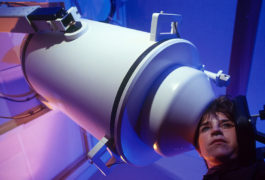Is excess brain fluid an early marker of autism?
Brain scans of hundreds of infants suggest that up to 80 percent of those with autism have unusual amounts of cerebrospinal fluid. Researchers are studying how this might contribute to the condition.

Brain scans of hundreds of infants suggest that up to 80 percent of those with autism have unusual amounts of cerebrospinal fluid. Researchers are studying how this might contribute to the condition.

The growth differences vary between autistic boys and girls and are most apparent among children with prominent social difficulties.

We asked five autism researchers to weigh in on whether there is a unique brain signature for autism and, if so, how to identify it.

A growing body of evidence suggests that autism involves atypical communication between brain regions, but how and where in the brain this plays out is unclear.

A new strategy for diagnosing autism shortens the evaluation process — and the wait for answers.
Women describe relief at finally learning they have autism, a man with epilepsy narrates during stimulation of his brain, and the brain’s immune cells are caught on film nibbling at neuronal connections.
Activists are arrested while protesting the use of electroshock devices, a Facebook group claims cabbage slurry can prevent autism, and a movie features romance — and actors — on the spectrum.

A project in Scotland dramatically increased the accuracy of autism diagnosis and cut waiting times in half.

Combining a brain imaging technique with a neuron stimulation method can reveal how activity at one site travels through neural networks in the brain.

Babies who are later diagnosed with autism may show aberrant connections between some brain regions in their first year of life.